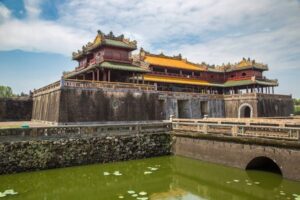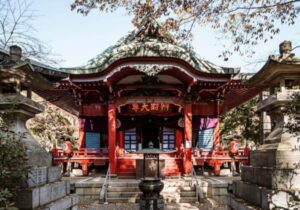The Travel Blog
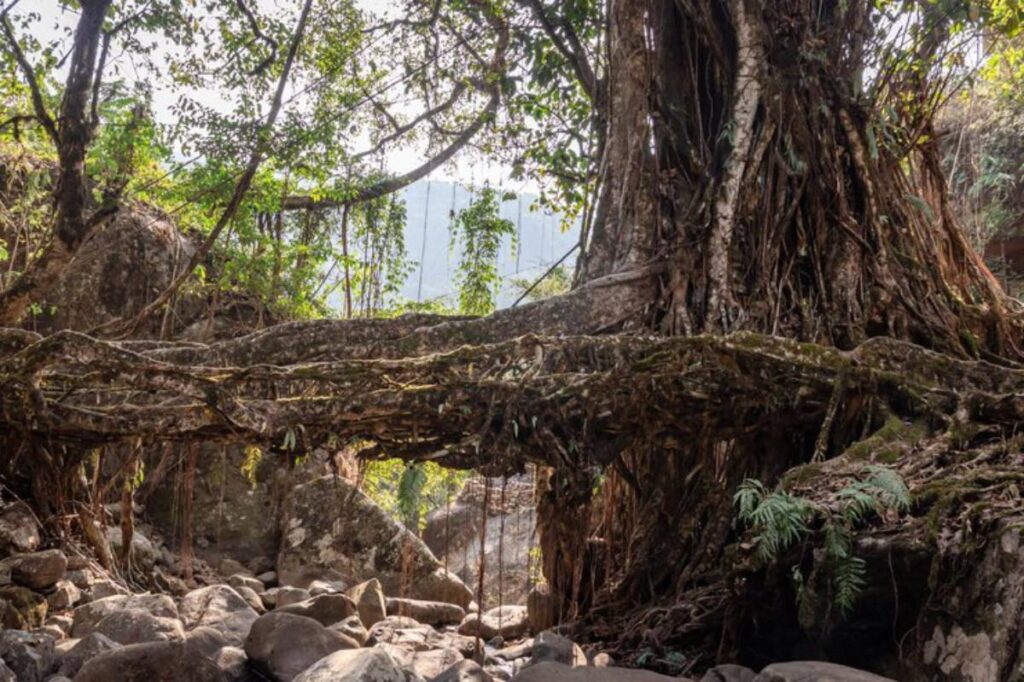
Meghalaya, India: Living Root Bridges and Rainforests
Imagine a bridge not built but grown, tangled in time and nature, guiding you over gushing rivers deep in the heart of one of the wettest places on Earth. Welcome to Meghalaya, India — a region where living root bridges connect more than just villages; they bind generations, stories, and ecosystems in leafy knots. This mystical land, whose name means “abode of clouds,” invites you into rainforest trekking experiences unlike anywhere else in India.
In this guide, you’ll step into the emerald world of Meghalaya — from the bioengineered marvels of the Khasi hills to hidden rainforest trails dripping with mist and mythology. If you’re craving eco-tourism, cultural insight, and offbeat adventure, Meghalaya delivers a journey where nature is not just the backdrop — it’s the architect, guide, and storyteller.
Nature’s Engineering: The Living Root Bridges of Meghalaya
What Are Living Root Bridges?
Living root bridges are not man-made structures — they are grown over decades by training the aerial roots of rubber trees (Ficus elastica) to stretch across streams and rivers. Found primarily in the Khasi and Jaintia Hills, these bridges can take 15–30 years to fully mature and last hundreds of years.
Their resilience is unmatched:
- They grow stronger with time
- Can support over 50 people at once
- Require no nails, cement, or steel
“It’s not just a bridge — it’s a living organism. I crossed one barefoot and felt like I was walking on a forest’s heartbeat.” — Anjali, eco-traveller
Must-Visit Root Bridges
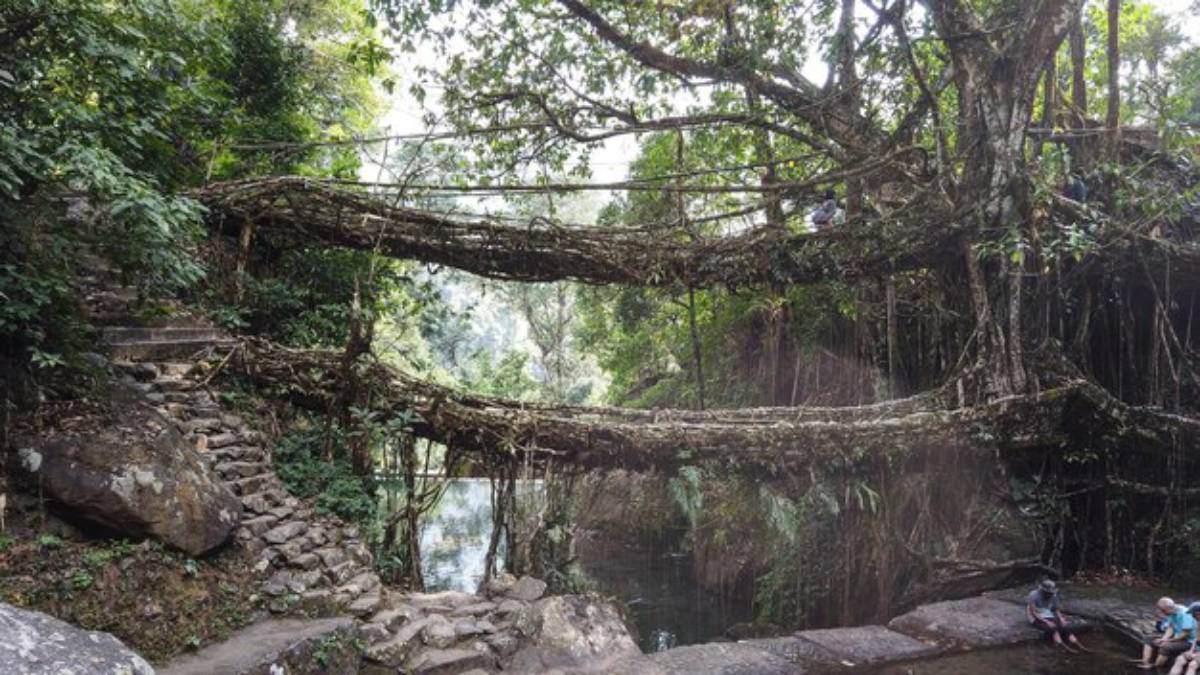
- Double Decker Living Root Bridge (Nongriat): The most iconic of all. A trek of 3,500 steps from Tyrna village.
- Ritymmen Bridge: Often overshadowed by its twin, but equally serene and less crowded.
- Umshiang Root Bridge: A less-visited gem deeper in the jungle, great for solitude seekers.
Rainforest Trekking: A Journey Through Mist and Myth
Trails That Enthral
Trekking in Meghalaya is not just about reaching a destination — it’s a sensory dive into a world of monsoon-fed greenery and tribal folklore.
Top trekking experiences include:
- Nongriat Trek: Combines the Double Decker bridge, waterfalls, and natural pools
- Dawki to Shnongpdeng Trail: River trails with suspension bridges and serene water vistas
- Mawsynram Rainforest Walk: In the world’s wettest region, rain becomes part of your gear
Expect:
- High humidity and frequent rain
- Wild orchids and medicinal plants
- Traditional rest shelters called ‘jingskei’ built from local materials
Tips for Trekking in Meghalaya
- Footwear: Grippy trekking sandals or waterproof hiking shoes
- Local Guides: Hire from the village councils to access insider knowledge and help the community
- Sustainability: Carry a refillable bottle and reusable containers
Love nature-based escapes? Dive deeper with Phong Nha-Kẻ Bàng, Vietnam: Exploring Ancient Karst Caves.
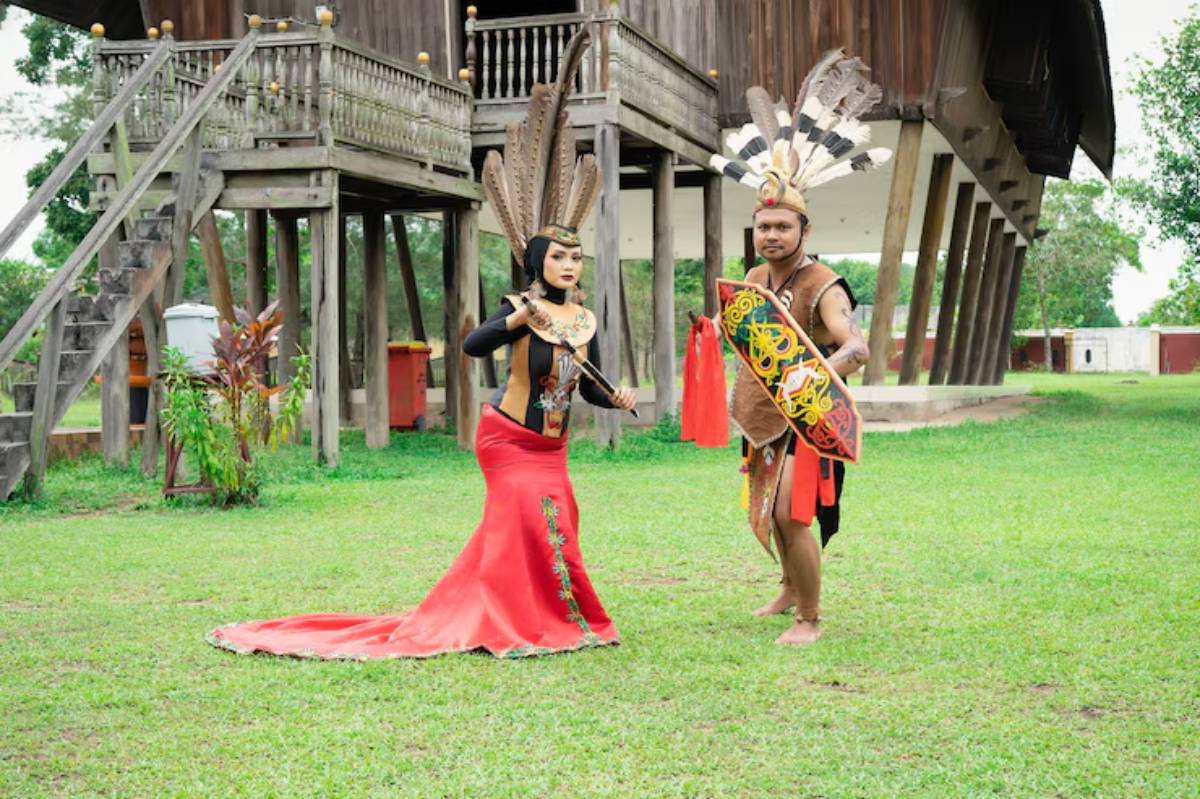
Cultural Connection: Khasi and Jaintia Hospitality
Meet the Matrilineal Societies
In Meghalaya, lineage and inheritance flow through the mother’s line. Women play a central role in the home and community, especially in the Khasi and Jaintia tribes.
Cultural experiences to explore:
- Home stays with Khasi families
- Traditional dances like Shad Suk Mynsiem
- Sampling Jadoh (rice with pork) and Tungrymbai (fermented soybeans)
“Our host mother explained each plant in her garden — from tea leaves to turmeric. It was like being in a living botany lesson.” — David, cultural traveller
Sacred Forests and Stories
Visit sacred groves like Mawphlang, where locals believe nature spirits dwell. These biodiverse patches are off-limits to logging and deeply respected by the communities.
Natural Wonders Beyond the Bridges
Waterfalls and Caves
The abundance of rainfall in Meghalaya creates spectacular waterfalls and limestone caves.
- Nohkalikai Falls: India’s tallest plunge waterfall near Cherrapunji
- Wei Sawdong: Terraced turquoise pools that feel like a dreamscape
- Mawsmai and Liat Prah Caves: Otherworldly cave networks perfect for spelunkers
Crystal Rivers and Boating Bliss
Head to Dawki, where the Umngot River flows so clearly it looks like boats are gliding on glass. You can:
- Take a scenic boat ride
- Camp by the riverbanks
- Visit nearby Shnongpdeng for adrenaline activities like cliff jumping and ziplining
Hidden Hamlet: Mawlynnong – Asia’s Cleanest Village
Often hailed as the cleanest village in Asia, Mawlynnong is a shining example of community-driven sustainability. Tucked near the Bangladesh border, this small Khasi settlement exudes charm with its spotless lanes, bamboo dustbins, and manicured flowerbeds lining every path.
What to Explore:
- Sky Viewpoint: Climb a bamboo tower for panoramic views of the Bangladesh plains below.
- Balancing Rock: A sacred natural formation revered by locals — a large boulder precariously perched on a smaller stone.
- Living Root Bridge: Mawlynnong also has its own single-decker version, ideal for a gentle jungle walk.
Beyond its cleanliness, what truly impresses is the deep-rooted environmental ethic and mutual respect among villagers. A stroll here feels like walking through a living lesson in harmony.
“Mawlynnong wasn’t just clean — it felt cared for. Every garden, every path seemed to carry pride.” — Priya, responsible traveller
When to Visit Meghalaya
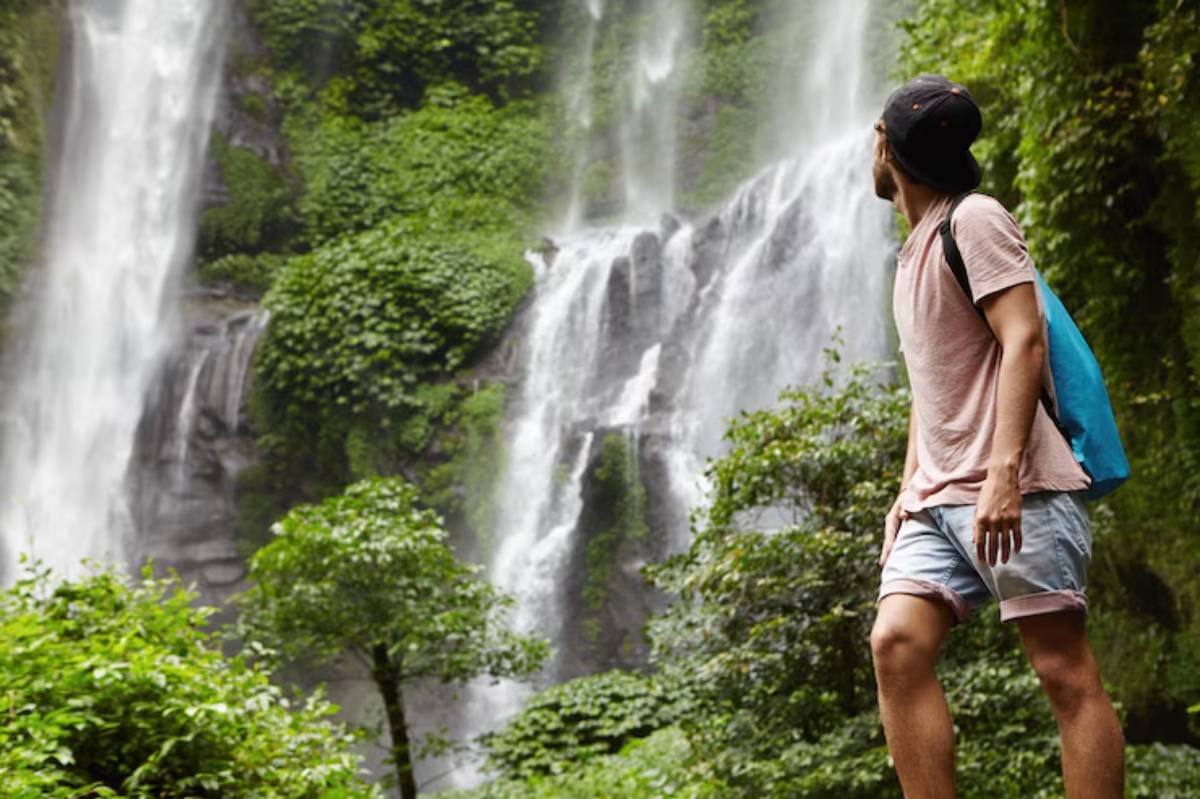
- October to April: Ideal for trekking and clear skies
- May to September: Lush monsoon beauty, though some trails may be slippery
Plan around local festivals like:
- Wangala Festival (Nov): The Garo tribe’s harvest celebration
- Shad Suk Mynsiem (Apr): Annual thanksgiving dance in Shillong
Travel Tips for Meghalaya Explorers
- Getting There: Fly into Guwahati (Assam) and take a 3–4 hour drive to Shillong, the gateway city
- Transport: Local taxis, shared sumos, and private cabs
- Accommodation: Choose eco-stays and homestays in Nongriat, Mawlynnong, and Cherrapunji
- Connectivity: Patchy mobile network in remote villages — embrace the digital detox
Conclusion: Where Roots Run Deeper Than Roads
Meghalaya doesn’t just showcase nature — it collaborates with it. From root bridges grown over generations to rainforests that echo with tribal chants, every corner of this state whispers ancient wisdom and green grace.
If you’re looking to reconnect with nature and culture, to slow down and listen to the Earth breathe, Meghalaya is your calling.
So, are you ready to walk across a bridge built by trees and time? Book that ticket, pack your poncho, and step into India’s greenest mystery.
Have you crossed a living root bridge? Share your story or travel tip in the comments!
Love nature and mountains? Check out Skardu, Pakistan: Gateway to the Karakoram Range.



